Choosing Between DTF vs UV DTF Printing
As the demand for custom prints on various surfaces grows, printing technologies continue to evolve. Two of the most innovative and widely adopted solutions today are Direct-to-Film (DTF) and UV Direct-to-Film (UV DTF) printing. Each offers its own strengths, materials, workflows, and end-product appeal.
In this guide, we’ll break down the key differences between DTF and UV DTF printing to help you choose the best option for your production needs. Whether you run a custom apparel shop, promotional product business, or craft studio, understanding how each method works will give you a strategic edge.
What Is DTF Printing?
DTF (Direct to Film) printing is a versatile heat transfer technology where designs are printed using pigment inks on a special film. The print is then coated with a hot melt adhesive powder and transferred onto garments using a heat press.
Key Components
- DTF Pigment Ink: Vibrant, water-based inks for vivid designs
- Hot Peel Film: Special film designed for smooth transfers
- Hot Melt Powder: Provides the adhesive layer between film and fabric
- Cleaning Solutions: Essential for printer maintenance
Benefits of DTF Printing
- Prints on cotton, polyester, blends, leather, and more
- Wash-resistant and stretchable results
- Soft hand feel with durable finish
- Great for apparel printing (t-shirts, hoodies, bags)
DTF Printer Options
MagicPrint4U offers both 4-head and 5-head DTF printers for small to large-scale production. More printheads mean faster output and smoother gradients.
Maintenance Requirements
DTF printers require regular cleaning with both DTF Cleaning Solution and Strong Cleaning Solution to prevent nozzle clogs and ensure consistent print quality.
What Is UV DTF Printing?
UV DTF printing skips the heat press entirely. Instead, UV inks are printed on a double-layer adhesive film, instantly cured with UV light, and transferred to the product surface using pressure.
Materials Used
- UV DTF Printer with UV-curable CMYK+W inks
- UV-sensitive adhesive films (double-layered)
- Varnish (optional) for glossy finish
Benefits of UV DTF Printing
- Print on non-porous materials: glass, wood, metal, plastic, leather
- No heat press required
- Waterproof, UV-resistant, and scratch-resistant
- Ideal for curved surfaces (tumblers, jars, bottles)
Common Applications
- Customized tumblers, phone cases, mugs, and packaging
- Wedding gifts and acrylic signage
- Brand labeling and promo items
Printing Workflow Comparison
| Step | DTF | UV DTF |
|---|---|---|
| Print Design | Onto PET film with pigment ink | Onto adhesive film with UV ink |
| Apply Adhesive | Use hot melt powder | Adhesive is built-in |
| Transfer Method | Heat press | Manual pressure |
| Target Surface | Fabric, soft materials | Hard, curved or flat surfaces |
Cost Considerations
- DTF setups are generally more affordable for apparel-based businesses
- UV DTF requires higher initial investment but offers expanded surface compatibility
When to Choose DTF Printing
Choose DTF if:
- Your main product line involves t-shirts, hoodies, tote bags, or fabric goods
- You need flexibility with garment types (cotton, polyester, blends)
- You prefer a traditional heat transfer workflow
When to Choose UV DTF Printing
Choose UV DTF if:
- You specialize in hard surface personalization
- Your products include tumblers, glassware, packaging, signs
- You want speed and skip the heat press step
Which One Is Better for Your Business?
There is no one-size-fits-all. DTF is perfect for garment-focused brands, while UV DTF opens up new revenue streams in the promotional and gift markets. Ideally, having both allows you to serve more customers and diversify your offerings.
Conclusion
Both DTF and UV DTF printing have carved their niche in the world of customization. While DTF is king for textiles, UV DTF dominates the non-fabric segment. If you’re just starting out, DTF may offer a lower barrier to entry. But if you’re looking for advanced surface compatibility, invest in a reliable UV DTF printer and explore the future of no-heat transfers.
Explore all the materials and machines you need—only at MagicPrint4U.
